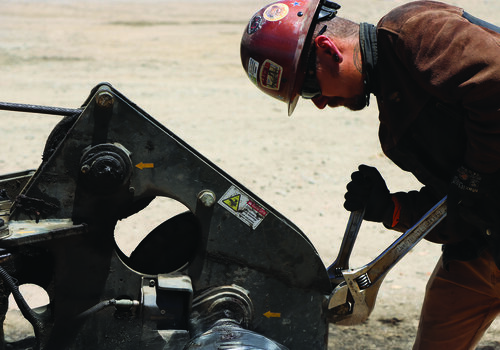There is a reason why technology is moving full speed into construction. Investors see opportunity. Venture capitalists invested $136 billion in 2019, after investing a record $140 billion in 2018.
According to the Associated General Contractors, 29 percent of firms are putting longer completion times into their bids for new work because of the lack of workers. McKinsey Global Institute found that 98 percent of megaprojects become delayed or over budget. Just 25 percent of projects came within 10 percent of their original deadlines in the past three years (KPMG).
With labor in short supply, contractors are looking toward technology to improve productivity. More than 7 of 10 contractors believe that advanced technologies can increase productivity (78%), improve schedules (75%), and enhance safety (79%)
Project monitoring is moving beyond documenting cost overruns and construction delays to include real-time insight and planning. Digital technologies eliminate the need for manual data entry and provide the data required to assess project status and identify trends and areas that should be addressed. Contractors are increasingly employing BIM technology, virtual reality, drones and robotics to improve productivity and reduce expensive rework.
To keep up with new technology, here are some new roles emerging on construction jobsites:
Director of Construction Technology
With so much new technology targeting construction, it’s been a challenge for construction companies to evaluate and successfully deploy these technologies. A new role has emerged to help companies with this task – Director of Construction Technology. David Epps, director of Construction Technology at Winter Construction, a commercial contractor based in Atlanta, has spent the past 16 years focused on innovative tools and technology in the construction industry. Over the past four years at Winter, his two-person department has expanded to four people, all of whom are tasked with solving construction problems through technology.
“Half of our job is sifting through new hardware and software and technology to figure out what is actually useful” said Epps. “We research the tools, then find project teams willing to beta test the technology. Once we prove it works, we present it to the entire company.”
Instead of asking project teams what they need, someone from the construction technology team sits in on meetings and provides solutions as project challenges become apparent. “We are translators,” said Epps. “We analyze the issues and translate how our tools can mitigate those problems.” As the construction technology team turns out data and products to support construction teams, others in the company learn what is possible. Now that construction managers have an increased awareness of the capabilities, they also reach out for assistance.
Epps believes it’s more effective to work this way, rather than trying to train everyone on all the technologies. “If you rely only on current staff to do it, it typically doesn’t work as well because people have their day jobs and the technology can be a distraction to that,” said Epps.
BIM is at the core of the construction technology department at Winter Construction. “I think of BIM as a practice run for construction projects,” says Epps. BIM can simulate the entire workflow and allows contractors to figure out where the problems are going to arise, before the job is under construction. According to Epps, they leverage the value of BIM on nearly every project, although on some projects they may only model a portion of the job to support a specific need.
In addition to BIM, the construction technology group utilizes virtual design and construction, as well as drones/unmanned air vehicles (UAVs), laser scanning, virtual and augmented reality, construction verification and construction simulation. Three of four in the department are certified drone pilots. Replacing helicopter flyovers with drones has saved money while allowing them to document project progress on a more frequent basis and gather valuable planning data. A HoloLens 2 purchased in December is being used for construction verification and new technologies are continually introduced to support constantly evolving project needs.
Epps believes most large contractors have someone in the role of director of construction technology, but not smaller firms. Given that 38.2% of construction firms cite “lack of staff to support the technology” as a primary limiting factor to adopting new technology, we expect the director of Construction Technology role to continue to grow within the industry.
Data Analysts
Demand for data analysts is growing across all industries and construction is no exception. The World Economic Forum listed data analyst as one of the most in-demand job categories across all industries.
Digitalization of data has created an opportunity for contractors and building owners in all phases of construction. For example, design and BIM data, environmental data, and input from stakeholders gathered through social media could help determine what to build and where to build it. Analysis of telematic data could be used to predict future failures of construction equipment. Analysis of safety data from wearables could help prevent injuries on the jobsite. Weather, traffic, and business activity data could be analyzed to determine optimal phasing of construction activities. Data analysts are the people who make sense of the data to guide decision-making.
Superior Construction with offices in the Southeast and Midwest, has added two data analysts over the past few years. “They started with business plans and budgets and now we are focused in on equipment analytics,” says Ernie Stephens, corporate equipment manager for Superior. The goal is to improve visibility of the telematics data to accounting and the project staff through a simplified dashboard. “At smaller companies, everyone is at max capacity,” says Stephens. “The idea is to make busy people less busy so they can do more. It’s important, high-value information.”
Brittany Hess, senior financial analyst with Superior Construction, has evolved her role to take on data analytics. She taught herself the coding skills that she needed to pull back end systems together using LinkedIn Premium. Hess is a fan of the dashboard. “I know the CFO is going to care about cash,” said Hess. “Ernie and the CEO want to see equipment reports, the project manager is concerned with production. While it is all the same data, I can toggle the dashboard to give each of them what they need.”
Firms like Superior Construction and Winter Construction are evidence the industry is slowly shedding its low-tech image. As this continues, roles with a technology focus will be some of the fastest growing careers in the construction industry.
Join over 40,000 industry peers who receive construction industry news and trends each week. Subscribe to CONEXPO-CON/AGG 365.












